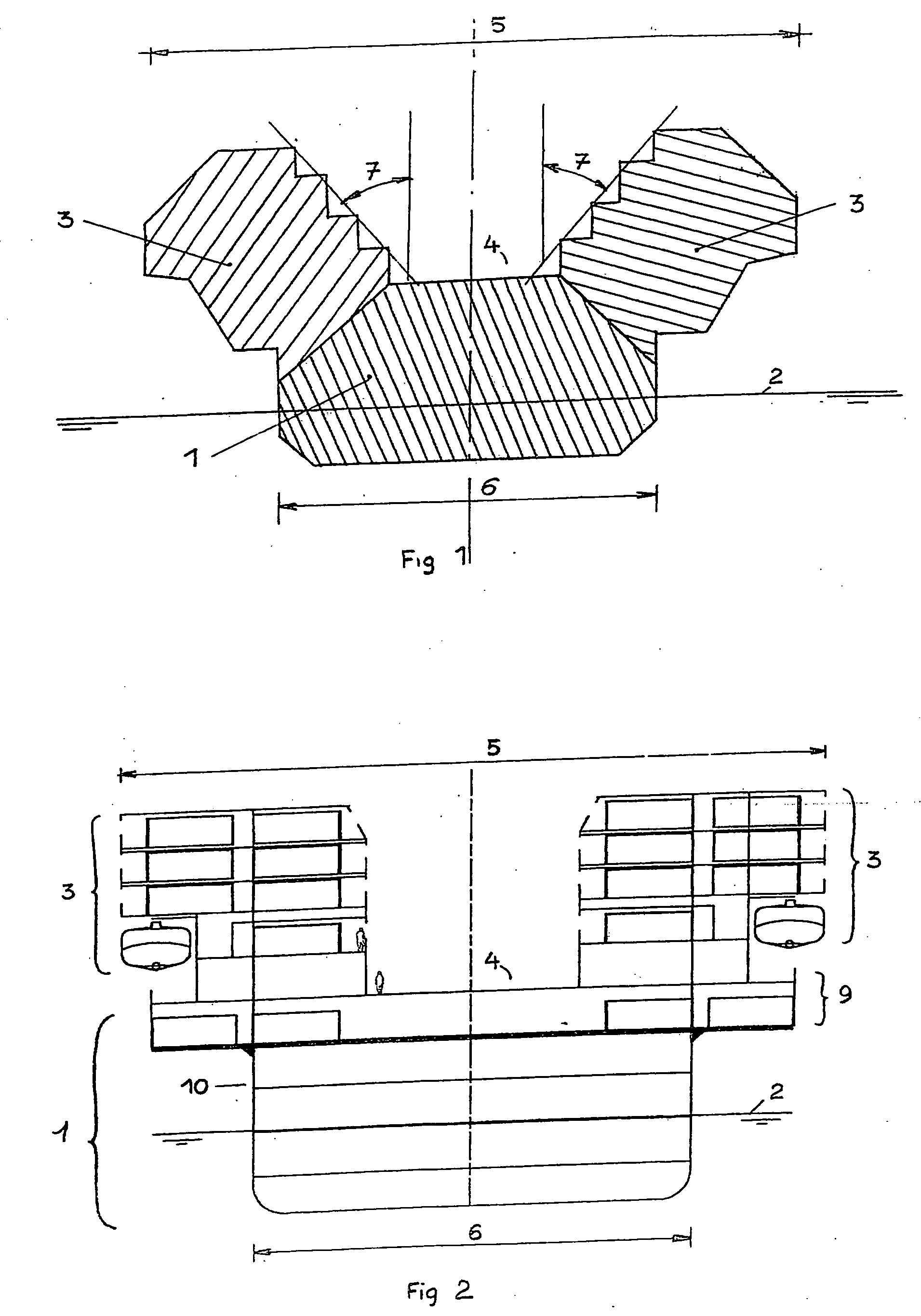Wide pleasure boat or cruise ship
a cruise ship and wide technology, applied in the direction of vessel superstructure, floating buildings, hull stems, etc., can solve the problems of widening the entire ship and high cost of building the underwater portions, and achieve the effect of less sensitive rolling characteristics, increased transverse inertia of the ship, and less prone to roll
- Summary
- Abstract
- Description
- Claims
- Application Information
AI Technical Summary
Benefits of technology
Problems solved by technology
Method used
Image
Examples
Embodiment Construction
[0028] Referring to the drawings, the ship has a main structure 1 whose portion below the waterline 2 constitutes the quickwork. An open or semi-open main public space 4 is situated on the main structure 1. The ship has port and starboard longitudinal superstructures 3 which border the public space and which are far away from the axial longitudinal plane of the ship so that the ratio of the width 5 of the combination comprising the longitudinal superstructures 3 and the public space to the width 6 of the ship at the waterline is from 1.3 to 3 and preferably from 1.6 to 2.5. For increased sunshine, the inboard facade of the superstructures can have a mean rake angle 7 from 3° to 50° and preferably from 5° to 35°.
[0029] Referring to FIG. 2, the ship can have a hull whose width 10 does not increase much or at all above the waterline, the mean angle between the edge of the hull and the vertical being less than 25°, the longitudinal superstructures 3 that border the public space being s...
PUM
 Login to View More
Login to View More Abstract
Description
Claims
Application Information
 Login to View More
Login to View More - R&D
- Intellectual Property
- Life Sciences
- Materials
- Tech Scout
- Unparalleled Data Quality
- Higher Quality Content
- 60% Fewer Hallucinations
Browse by: Latest US Patents, China's latest patents, Technical Efficacy Thesaurus, Application Domain, Technology Topic, Popular Technical Reports.
© 2025 PatSnap. All rights reserved.Legal|Privacy policy|Modern Slavery Act Transparency Statement|Sitemap|About US| Contact US: help@patsnap.com



